How Gemstones Get Their Colors
Color is the most important characteristic of colored gemstones. But why do the different gemstones have different colors? What's responsible for the variation in color?
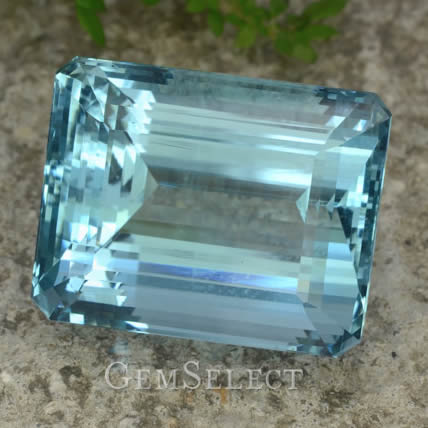
Aquamarine - Colored by Iron
Color is a result of the way gemstones absorb light. Light is an electromagnetic vibration at certain wavelengths. The human eye can only perceive wavelengths between 380 and 750 nm. The colors of the spectrum that are visible to us are red, orange, yellow, green, blue and violet.
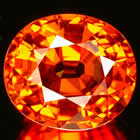 If all the different wavelengths of light pass through a gemstone, it will appear colorless. On the other hand, if the gem material absorbs all light, it will be appear black. But if a stone absorbs all wavelengths except those in the red part of the spectrum, the gem will appear red. Explore gemstones by color: Color guide for gemstones, all colors. If all the different wavelengths of light pass through a gemstone, it will appear colorless. On the other hand, if the gem material absorbs all light, it will be appear black. But if a stone absorbs all wavelengths except those in the red part of the spectrum, the gem will appear red. Explore gemstones by color: Color guide for gemstones, all colors.
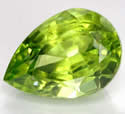 Gemstones absorb light differently for several reasons. Some are known as idiochromatic or "self-colored," meaning their chemical structure causes them to absorb specific wavelengths of light. For instance, peridot, which contains iron, is an example of an idiochromatic gemstone. Gemstones absorb light differently for several reasons. Some are known as idiochromatic or "self-colored," meaning their chemical structure causes them to absorb specific wavelengths of light. For instance, peridot, which contains iron, is an example of an idiochromatic gemstone.
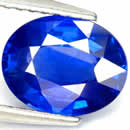 However, idiochromatic gemstones are rare. Most gemstones are allochromatic, meaning that they are colored by impurities or trace elements in their crystal structure. For example, pure corundum is colorless. But corundum is typically red when traces of chromium are present and blue when there are traces of titanium. We call the former ruby, and the latter sapphire. However, idiochromatic gemstones are rare. Most gemstones are allochromatic, meaning that they are colored by impurities or trace elements in their crystal structure. For example, pure corundum is colorless. But corundum is typically red when traces of chromium are present and blue when there are traces of titanium. We call the former ruby, and the latter sapphire.
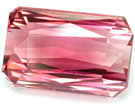 The most common trace elements in gemstones are beryllium (emerald), chromium (emerald, jade, chrome tourmaline, ruby and topaz), copper (Paraiba tourmaline, turquoise and malachite), iron (yellow sapphire, aquamarine, green tourmaline, chrysoberyl, citrine and jade), lithium (green and pink tourmaline), manganese (pink tourmaline, morganite, kunzite and spessartite garnet), sulfur (lapis lazuli), titanium (loose sapphire) and vanadium (emerald, alexandrite and color-change sapphire). The most common trace elements in gemstones are beryllium (emerald), chromium (emerald, jade, chrome tourmaline, ruby and topaz), copper (Paraiba tourmaline, turquoise and malachite), iron (yellow sapphire, aquamarine, green tourmaline, chrysoberyl, citrine and jade), lithium (green and pink tourmaline), manganese (pink tourmaline, morganite, kunzite and spessartite garnet), sulfur (lapis lazuli), titanium (loose sapphire) and vanadium (emerald, alexandrite and color-change sapphire).
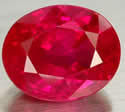 One thing you will notice from this list is that the relationship between chemical impurity and gemstone color is not a simple one. In some cases, a similar color can result from different trace elements; the green of an emerald can be the result of chromium or vanadium (or both). In other cases, a single trace element can produce different colors in different gem varieties. Thus chromium will produce a green color in emerald, but result in a red color in corundum. This is because there is a complex relationship between the gem's crystal structure and the trace elements. One thing you will notice from this list is that the relationship between chemical impurity and gemstone color is not a simple one. In some cases, a similar color can result from different trace elements; the green of an emerald can be the result of chromium or vanadium (or both). In other cases, a single trace element can produce different colors in different gem varieties. Thus chromium will produce a green color in emerald, but result in a red color in corundum. This is because there is a complex relationship between the gem's crystal structure and the trace elements.
 This short piece would not be complete without mentioning another important way in which gemstones acquire color - through human intervention in the form of gem treatments. Heat treatment, for example, is often used to change the chemical state of an impurity in order to deepen or lighten color, reduce a certain hue (such as the green tone in aquamarine), or to improve clarity. This short piece would not be complete without mentioning another important way in which gemstones acquire color - through human intervention in the form of gem treatments. Heat treatment, for example, is often used to change the chemical state of an impurity in order to deepen or lighten color, reduce a certain hue (such as the green tone in aquamarine), or to improve clarity.
|
